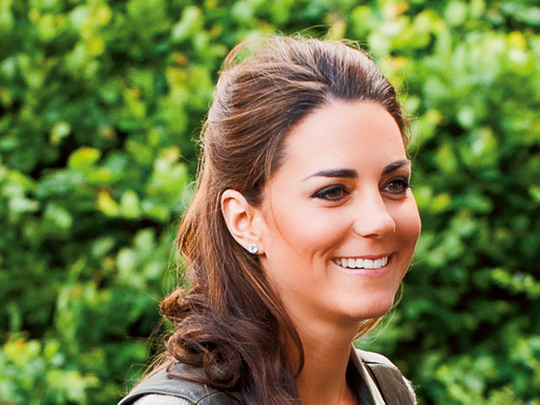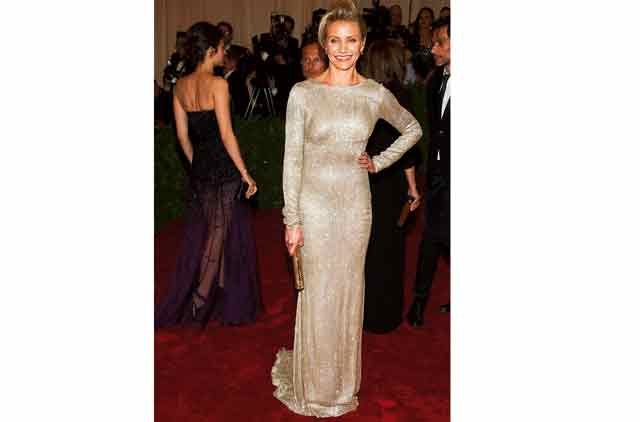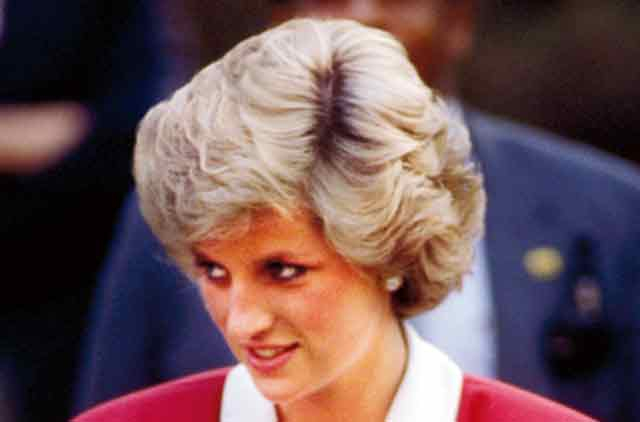
When you go to the salon next, or pick out the style and colour for your hair, take a look at the stock market and how the world’s biggest economies are faring. If things are positive on the financial front, chances are the current trends of ombré (dark tones at the roots graduated to a much lighter shade at the ends), bronde (that perfect shade between blonde and brunette) or balayage (near-natural highlights) are out.
The way things are now, it’s tempting to think this may be the trend for a while. Easily achieved with grown out hair colour and effortless to maintain, this gradient-heavy trend is ideal for a world hiccuping its way to recovery from an economic downturn.
“Post-recession a blonde prefers to stay blonde and not go brunette. Keeping a colour close to their natural hair colour and fewer or no highlights is definitely low-maintenance,” says style commentator Amit Anand, of dreamingofgucci.blogspot.com.
When things are good, or very good, the way they were just before the recession, people cannot do enough for their hair — laminating, bonding, complex colouring, plus many visits to salons. Naturally, a bad economy means dark hair, since touch ups to hair colour may be needed every two to six weeks.
Stretching visits
The rule of thumb for salon visits is that during a downturn, customers will stretch their visits to eight weeks, but will resume a schedule of every six weeks when the economy is on the mend. For those tracking the economy, expenditure at hair salons is one of the indicators of economic well-being.
But the gradient may not last long. In March this year financial information company Sageworks published an analysis of financial statements for privately held salons in the US. According to its data, beauty salons had an average annual sales growth of 5.37 per cent in 2010 and 2011, which is slightly below the two-year average for all of the privately held companies in the company’s database.
“Sales are growing, yes, but even more exciting is the fact we see an uptake in the net profit margin by 7.77 per cent in salons, which means not only are
they selling more but are making more money per sale, and keeping more of that money,” Greg Mulholland, analyst and director of strategic alliances, Sageworks, tells GN Focus.
Brief encounters
Haircare is not the only appearance-based economic system. Several indexes look at consumption behaviour. Former US Federal Reserve chairman Alan Greenspan used men’s underwear purchases as an economic indicator. The Men’s Underwear Index (MUI) is based on the premise that during economic downtimes, men tend to keep their worn-out briefs and boxers a lot longer than they normally would, refreshing their drawers only when things get better.
Estée Lauder chairman Leonard Lauder proposed the Lipstick Index in 2001, saying that lipstick sales go up when the economy is in trouble, since women use these relatively inexpensive purchases as a substitute for more costly shopping for say, clothing or shoes. More popular is the Hemline Index theory, which suggests that prices rise with the stock market index, causing fashion designers to use less fabric to save money. Sageworks data shows that compared to other non-essential industries, such as home furnishings (0.5 per cent in the last two years) and clothing stores (3.22 per cent over the same period), salon profit margins have been the highest.
Complex index
The beauty of the Hair Index is that it can and does reflect complexity. Salon sales have many variables. While other indices simply track purchases, the Hair Index is not a simple yes-or-no proposition. “First I make the choice to visit the salon or not. Then, I may have my hair cut but may not have the other treatments,” says Mulholland.
“Depending on their economic security, a person can get a trim, highlights, colouring, value-added haircare products, or other services. Someone of more comfortable financial standing may opt for more expensive products and treatments.”
On top of that, hair trends aren’t simple. Most eras have more than one big trend. The booming 1980s dictated mall bangs, poodle perms and voluminous hair but the decade also saw Princess Diana with short, elegantly layered hair.
Yet, all were heavy-maintenance styles.
Classic future
2012 hair trend forecasts include classic fashion revivals, bringing to mind mummy, princesses and governesses, with styles that look well put together but are deceptively easy.
Anand says, “Both men and women are cutting down on buying expensive salon services such as colouring, straightening, perming. The emphasis is on DIY maintenance.”
Home hair colouring, stylists say, is now more prevalent. “Cost and convenience factors come into play,” says Christophe Robin, home hair colour consultant, L’Oréal Paris.
One trend this season is long and bouncy. As comfort hairstyles go, what is more comforting than Rapunzel lifting you away from all your troubles?
The classics have even appropriated international sex kittens. While commentators may decry the rise of porno-chic in six-inch heels and artificial hair, style forecasters say the winner will be the Brigitte Bardot style — partly up, quite like Catherine, Duchess of Cambridge, wears her hair. The retro faux bob, perfected by the Stepford wife or by Betty Draper from the television series Mad Men has also returned.
With economic variations, hairstyles change too. Anand points to subtler geographical differences. “Some countries are bearing the brunt of the prolonged recession, others are seeing ground-breaking style and consumption in fashion and grooming, such as Brazil, Russia, India and China.”
In the US, hair trends echo the widening gap between average and very rich families. Just-released data from the Survey of Consumer Finances shows that the average American family’s net worth dropped almost 40 per cent between 2007 and 2010, while families in the top 10 per cent income bracket saw their incomes rise.
At last month’s Metropolitan Museum of Art’s annual costume gala, considered the fashion Oscars, the top 10 per cent showed that they can eat cake and have high-maintenance hair, albeit with a nod to the gradient (and the recession-hit). Cameron Diaz rocked a blonde bouffant, while Carey Mulligan added a vintage touch to her short, blonde crop with some side-swept back-combing.
*************
Golden age for men
Amit Anand, commentator at dreamingofgucci.blogspot.com says men’s grooming is now in a golden age in this time of recession and men are paying more attention to their appearance as they try to recession-proof themselves.
Styles vary from short cropped to slick with a side parting, and spiky styles for men. The idea is to keep a style that is minimalist yet trendy. Longer hair is a passing trend and is more celebrity driven.
“Men are becoming too competitive to be able to carry off the scraggly (as in untidy) look in this decade. Johnny Depp, Ashton Kutcher and Chris Hemsworth (pictured here) of The Avengers fame have rocked this look but I feel this style cannot be generalised,” says Anand.
Short cropped hair, buzz or bob cut and prim and proper are trends seen in Mad Men, and movies such as The Great Gatsby. Celebrities rocking this look include George Clooney, Will Smith and Amir Khan.
— S.S.
















